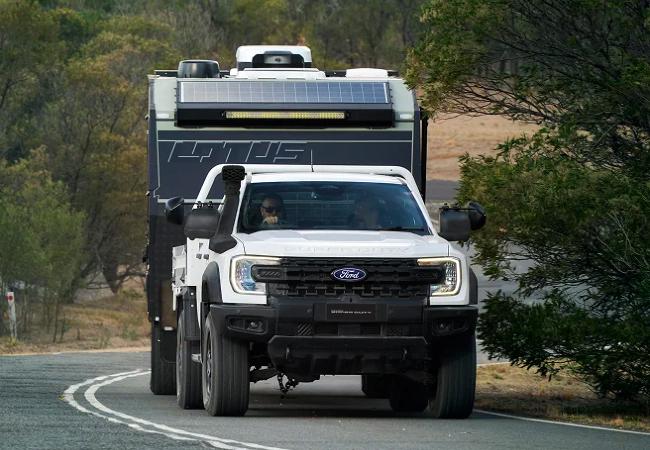Ford Ranger has dominated the NZ vehicle market for years. Ford is now taking things to the next level with the new Ford Ranger Super Duty.
Set to arrive in 2026, this purpose-built heavy-duty ute is poised to revolutionise what we expect from a mid-sized work vehicle.
With its impressive towing capacity, increased payload, and enhanced off-road credentials, the Ford Ranger Super Duty is designed specifically for those customers who push their vehicles to the absolute limit.
I’ve spent some time researching what’s coming, and I’m really excited about what this new variant means for our customers across various industries.
What Makes the Ford Ranger Super Duty Special?
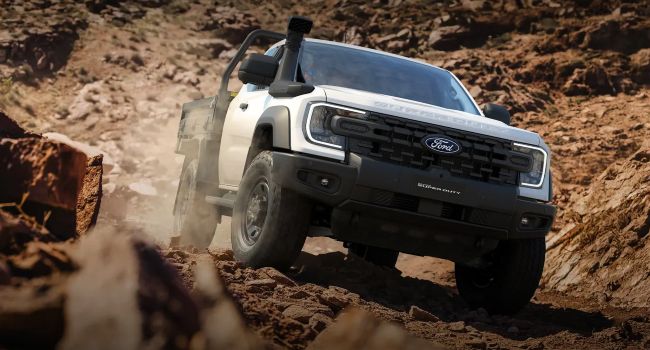
Unlike regular utes that are often compromised between passenger comfort and work capabilities, the Ranger Super Duty has been engineered from the ground up with one purpose in mind: to be the toughest and most capable mid-sized ute available.
The numbers tell an impressive story:
- A massive 4,500kg braked towing capacity (1,000kg more than standard Rangers)
- 4,500kg gross vehicle mass (GVM)
- 8,000kg gross combination mass (GCM)
To put these figures in perspective, the standard Ranger tops out at around 3,500kg towing capacity and has a GVM between 3,060kg and 3,350kg.
The Super Duty is a significant jump in capability that could be game-changing for many businesses.
But the Ford Ranger Super Duty isn’t just about bigger numbers on a spec sheet. Ford Australia’s engineering team spent years developing this vehicle after consulting with fleet managers, emergency services, and businesses across multiple industries to understand what they needed from a heavy-duty mid-sized ute.
Built Tough Where It Counts
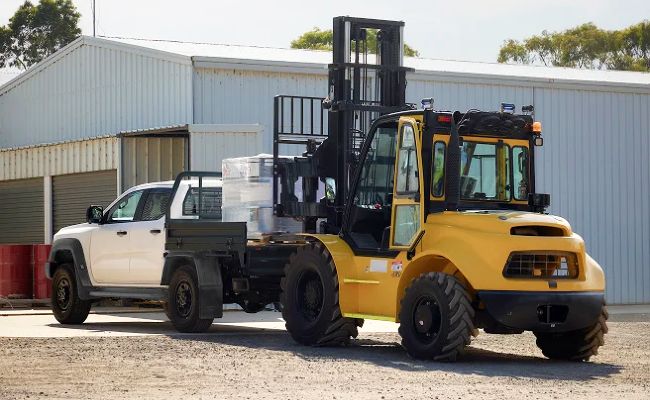
When tackling challenging work requirements, you need a vehicle that won’t let you down. The Ranger Super Duty starts with the standard Ranger platform but adds significant reinforcement where it matters most:
- Thicker steel in the chassis frame
- Stronger welds and additional cross members
- Revised suspension components designed for heavier loads
- Eight-stud wheel hubs (upgraded from the standard six-stud configuration)
- Larger, more robust differentials
- Front and rear electronic locking differentials as standard
Under the bonnet, the Super Duty is expected to feature Ford’s 3.0-litre V6 turbo-diesel. It’s been retuned to meet more stringent emissions standards while handling the increased workload.
The cooling system has also been upgraded with a 25% more powerful fan to keep things cool under load.
One especially clever addition is the unique sealed snorkel system that comes standard, allowing for deeper water crossings and better dust protection when working in harsh conditions.
Combined with high-mounted breathers for the differential, transmission, fuel, and transfer case, it’s clear this ute was designed for operation in extreme environments.
Towing Smarts to Match the Muscle
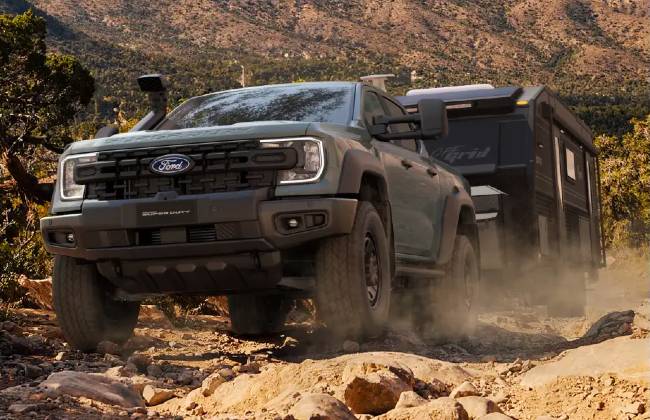
Towing capabilities are one thing, but the Ford Ranger Super Duty also packs intelligent features to make towing safer and easier.
The ute includes Ford’s Pro-Trailer Backup Assist system, which simplifies reversing with a trailer by allowing the driver to steer using a dial rather than the steering wheel.
A Smart Hitch system helps operators understand weight distribution on the towball, while onboard scales use suspension sensors to estimate payload in real-time.
These features aren’t just convenient – they’re potentially business-saving when you’re working at the limits of vehicle capability.
How Does It Compare to Other Options?
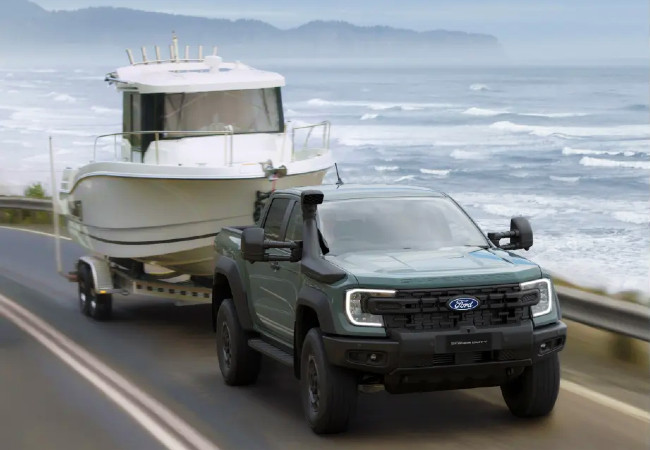
Currently, businesses needing this level of capability typically face a choice between:
- Light trucks like the Isuzu N-Series or Iveco Daily – offering good payload but with higher fuel consumption, cost, reduced comfort, and requiring a truck licence.
- American full-size pickups like the RAM 1500 or Ford F-150 – offering good towing but with poorer payload capacity, larger dimensions that are less practical in tight spaces, and significantly higher purchase prices.
- Toyota LandCruiser 70 Series – offering legendary durability but with dated technology and comfort.
The Ford Ranger Super Duty bridges this gap by providing heavy-duty capabilities in a more manageable size, with modern safety features and creature comforts.
Who Will Benefit Most from the Ford Ranger Super Duty?
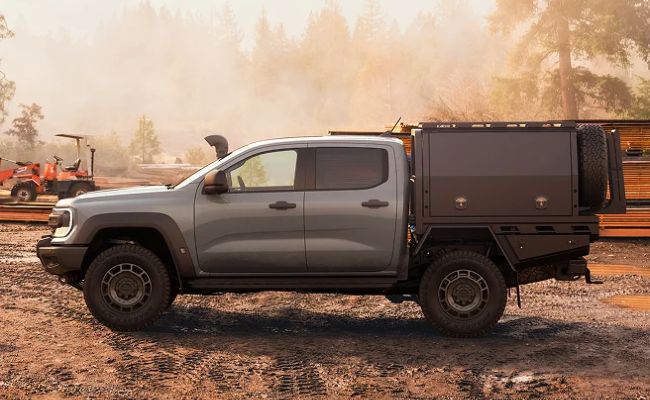
Based on the specifications and capabilities, several industries and customer types stand to benefit significantly from the Ford Ranger Super Duty:
Tradies, Engineers, etc
For tradies who need to transport heavy equipment and materials, the Super Duty’s increased payload will be a game-changer.
The option to have both a proper tray fit-out and still tow a substantial trailer means one vehicle can potentially do the job that previously required two.
Imagine a plumber being able to carry all their tools, parts, and equipment in a well-organised tray system while still towing a mini excavator to the job site.
Or an electrician who needs to tow a generator while carrying all their tools and cable reels.
Businesses Focused on Cashflow
With a vehicle that can do the work of both a ute and a light truck, businesses could potentially reduce their fleet size, saving on both upfront costs and ongoing maintenance.
The ability to handle heavier loads might mean fewer trips to and from suppliers or job sites, improving efficiency and reducing fuel costs.
Data-Driven Operators
For those managing fleets, the Super Duty’s integrated payload measurement systems provide real-time data on how the vehicle is being used.
This transparency can help prevent overloading, improve safety compliance, and provide valuable insights into fleet utilisation.
Rural and Agricultural Applications
Farmers and agricultural contractors will appreciate the true off-road capability combined with serious towing capacity.
Whether it’s towing stock trailers across difficult terrain or hauling equipment to remote locations, the Super Duty’s combination of ruggedness and capability makes it ideal for rural applications.
Emergency Services and Utilities
With its reinforced chassis, improved water wading depth, and ability to carry essential equipment while towing, the Super Duty is positioned as an ideal vehicle for emergency services operating in challenging conditions.
The increased GVM means more specialised equipment can be carried without compromising capacity.
When Can We Expect It in New Zealand?
Ford has announced that the Ranger Super Duty will be arriving in 2026, with ordering expected to open later this year in NZ.
The ute will be available in several configurations:
- Single cab-chassis
- Super cab-chassis
- Double cab-chassis
- Double cab pick-up

There will also be an XLT version for those seeking a more refined long-distance experience, though this variant won’t arrive until mid-2026.
Final Thoughts on the Ford Ranger Super Duty
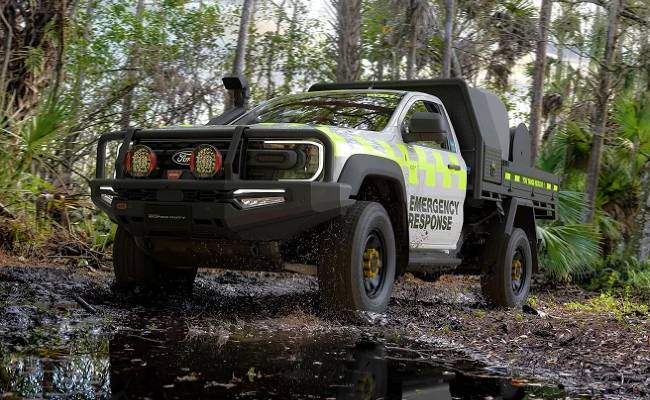
The Ford Ranger Super Duty represents a significant evolution in the ute market. Rather than just adding fancy trim or boosting power for marketing purposes, Ford has created a purpose-built workhorse that directly addresses the needs of businesses operating at the limits of what a conventional ute can handle.
By bridging the gap between traditional utes and light trucks, the Super Duty creates a new category that could prove immensely valuable to New Zealand businesses across multiple industries.
It combines the manoeuvrability and comfort of a mid-sized ute with capabilities previously only available in much larger or more specialised vehicles.
For businesses that push their vehicles to the limit, the wait until 2026 might be well worth it.
The Ford Ranger Super Duty isn’t just another ute variant – it’s a purpose-built tool designed for those who demand more from their vehicles than the standard offerings can provide.
As someone who’s seen how the right vehicle can transform a business’s operations, I’ll be watching closely as more details emerge about this exciting addition to the Ford lineup.
We’ll have lease pricing available as soon as it’s released. Stay tuned.
